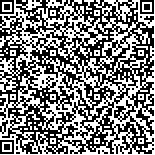下载中心
优秀审稿专家
优秀论文
相关链接
摘要

天宫一号高光谱数据是继美国Hyperion之后,另一种可应用于地质领域的成像光谱数据.面向地质应用特点与需求,针对反射率产品开展全面、定量的数据质量评价对于深化应用研究具有重要意义.但是,由于航天成像光谱数据与地面实测波谱空间尺度差异甚大,在荒漠戈壁区选取自然地物进行波谱测试,并对其开展评价,特别是定量评价,非常困难.本文以航空HyMap数据为传递,完成了天宫一号成像光谱数据质量的定量评价.结果表明,在矿物识别采用的主要短波红外谱段,天宫一号高光谱数据的信噪比明显优于Hyperion数据.采用2190—2230 nm、2310—2355 nm两个谱段的吸收深度初步对天宫一号高光谱短波红外数据真实性进行了评价,经过校正后,天宫一号数据Al-OH、Mg-OH/CO32-矿物大类或组合的漏提率从71%、67%减小至29%、28%,可有效提高弱信息的检出率.
The first imaging spectrometer developed by China, lunched onboard Tiangong-1 spacecraft, is another sensor after Hyperion of America being suitable for geological applications. It is important to evaluate the reflectance data quantitatively. However, quantitative evaluation of spaceborne data is difficult because of low spatial resolution and largegeometric error which will make it difficult to compare ground and imaging spectra. In this paper, the Tiangong-1 hyperspectral data was evaluated on the basis of HyMap data and ground spectra, and was compared with Hyperion data. Results show that, the signal-to-noise of Tiangong-1 data is larger than Hyperion data in shortwave infrared wavelength range, which is important to minerals retrieval. A correction method is put forward to reduce the spectral system error, which can improve the identification rate of minerals. Through spectral correction, the miss identification rate of Al-OH,Mg-OH/CO32- bearing minerals decrease from 71% and 67% to 29% and 28%.

